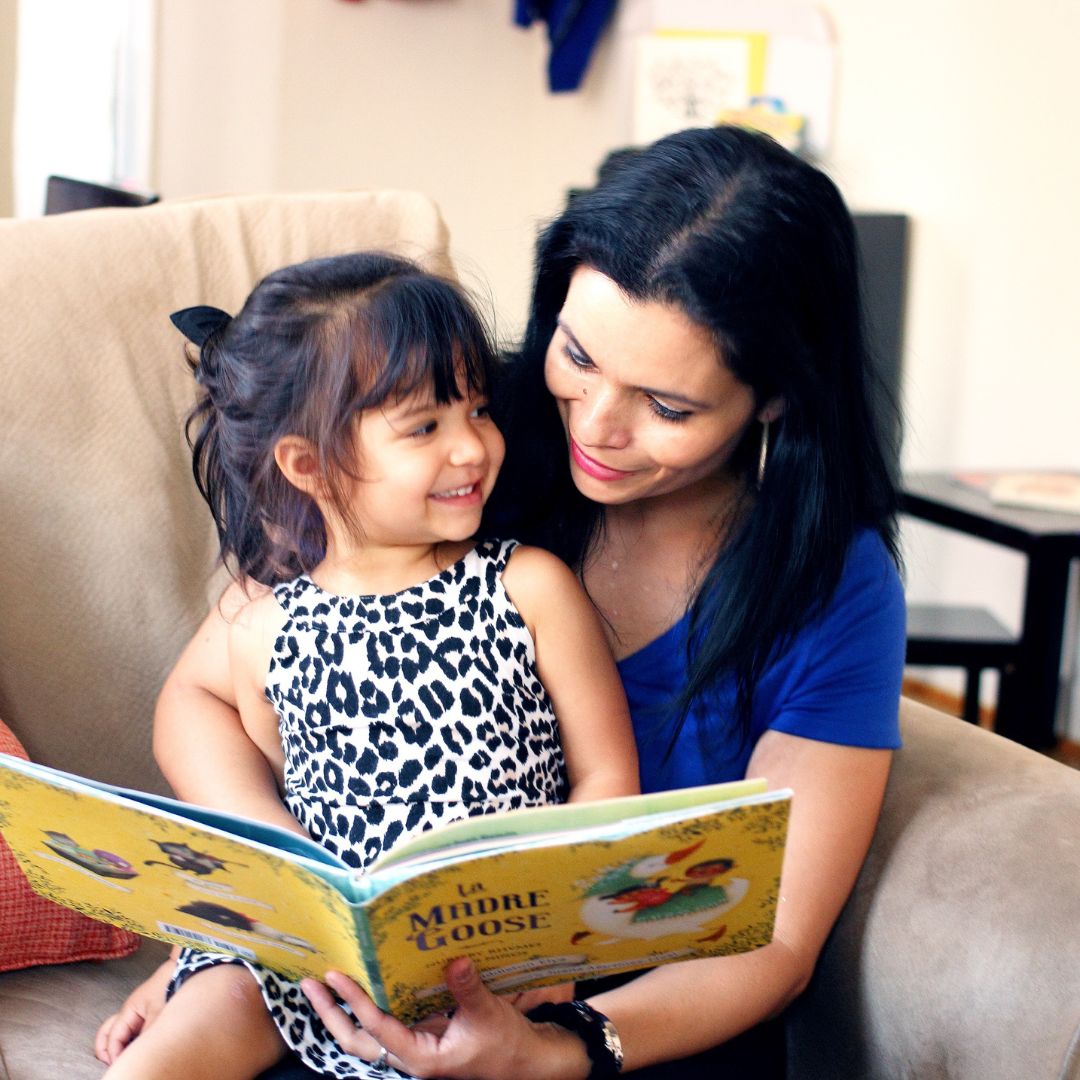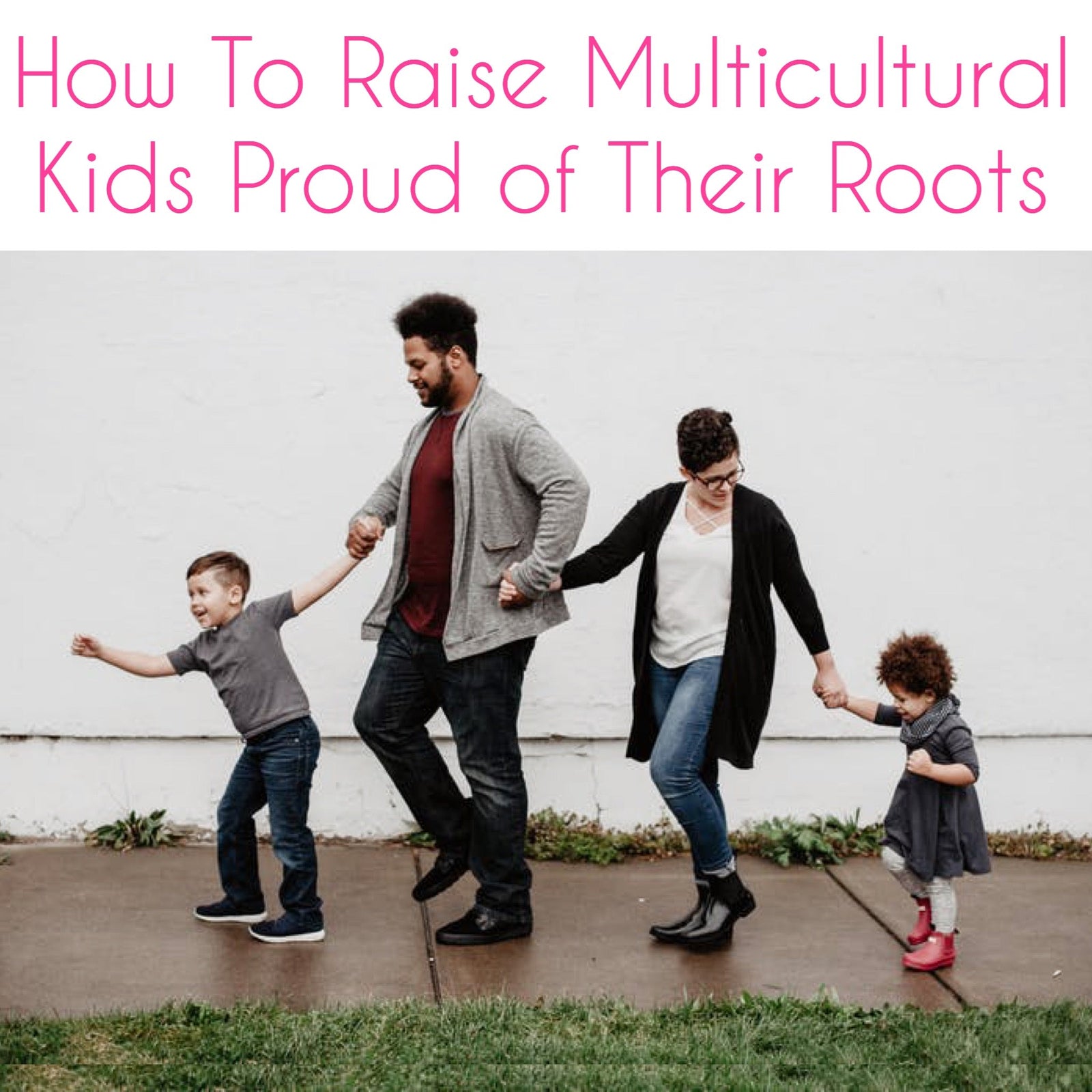
I was born in Colombia, raised in Miami, Florida and both of my parents are Colombian as are my siblings. My husband was born in Sofia, Bulgaria, immigrated to the U.S when he was 18 years old and his family is also Bulgarian. Our daughter, Victoria, was born in Manhattan, NY. She is now 6 years old and we are doing our best to raise her to be in touch with her roots and heritage while also being a proud American.
As a Latina, my culture is rich in history, art, music, folklore and my favorite, cuisine! Growing up you can remember the foods that you ate, maybe it was natilla con buñuelos (custard with cheese balls), or pozole (corn stew), or arroz con gandules with lechón (chickpeas and rice with pork), all while being gathered with our familias. You can remember the music that was playing and the stories being told. As children, those experiences helped us understand our culture, where our parents came from, and what being Latino meant.

But what about OUR bicultural or multicultural kids?
We cannot assume that kids will automatically absorb their parent's cultures and languages. While many of us Latinos are 1st generation born or raised in the US, for many of our families English was a second language and Español was their first. Thus, we were likely raised more Latino than Americans because of it. Our children likely have English as their first language and may be raised in a more traditional American environment as well, making it difficult for us as parents to keep the culture alive.

How can we raise children to be proud of their Hispanic Heritage?
You have to consciously work at it. Just like any successful relationship or career, you have to work at it consistently and consciously. Find opportunities to expose your child to your culture, even if it means going a little out of your way. With time you will start to help your children make that connection and they will start to embrace their roots.

8 Ways You Can Raise Multicultural Children Connected to Their Latino Roots
1. Start with the language.
Some of us are fluent speakers, readers, writers of Español (or insert your language), others are not. Wherever you are in the Español spectrum, it's never too late to learn as a family. With audio books, YouTube, podcasts, etc, you can have access to a Spanish lesson 24/7. Immerse your child in Español even if you don't speak it so well. Children absorb everything, but there has to be exposure and a need in order for them to fully grasp the language.
And it's ok to be proud of it!
2. Expose them to multicultural books & characters.
It is great when children grow up identifying themselves with characters like them. Growing up I don't remember reading books with characters I could identify with, but I do remember growing up watching Chespirito, Que Pasa USA, and seeing Luis and Maria on Sesame Street. Today there are so many great books and characters. Read to them and then read some more. If you can read to them in Español, even better! Here are some multicultural books that we love!
3. Use Spanish and Latino Music as a source of connection.
I love hard rock and heavy metal. My husband is a musician and music is very much a part of our world. I also love me some Maluma, Maná, Mon Laforte, and old school Salsa from Celia Cruz, rancheras, boleros, cumbias (when I'm in the mood) and so much more. We expose our daughter to everything (G rated of course) in just about every music genre. To me it's important that she's exposed to the sounds of our culture and it helps her learn Spanish. I created a bilingual playlist on YouTube specifically for her to listen to her favorite children's songs in Español. There are countless playlists, create your own, and let them help you. What's even better is that you can find bilingual music like 123 Andres that is designed with the bilingual bicultural or multicultural child in mind!
4. Introduce your kids to your Hispanic flavors and Latino cuisine.
Even if your great great abuela, que en paz descanse (may she rest in peace), is rolling in her grave because you can't make tamales, hand made tortillas or arepas, doesn't mean you can't buy them and introduce them to your children. Yes, it's wonderful when we can keep a traditional family recipe alive generation after generation but maybe we're not all cooks! You can support local restaurants, local food vendors or trucks, or even order online. I love http://www.amigofoods.com/ they have all types of foods and ingredients from Latin America and will deliver to your door.
https://www.pinterest.com/pin/838021443133581729/

5. Get involved with your comunidad (community).

6. Take advantage of family gatherings to learn about your family's history and traditions.
Latino families love an excuse to get together and now it can happen even virtually! Whether it's watching fútbol (soccer), the latest novela, or an outdoor barbeque, use opportunities like this to ask about your family history, your family tree, get in the kitchen to see your abuela making tamales (take pictures and shoot video), ask about your relatives, art, music, and listen to stories. Every familia is unique and special (like this one). Memories are beautiful and great but unless you document them somewhere, with time they too will fade.
7. Document and save a digital and a hard copy of your family's most prized keepsakes.
Technology makes it easy to document things and that's great, but it lacks the emotional connection you get when you physically hold a picture, a handwritten letter, or your baby's original hand print. Documenting our familia's stories, traditions, recipes, keeps our Latino legacies alive. So maybe you're not a chef but maybe your son will grow up to have his restaurant empire. Wouldn't he love to use a passed down recipe? I know one of the mom's I interviewed for The Latina Mom Legacy podcast gifted her grandchild a handwritten scrapbook with all of the familia's recipes. What a beautiful family heirloom!
A tangible document will create that connection, a digital copy will ensure that if the tangible copy gets ruined, you have a backup. My daughter loves albums. She loves looking at pictures, asking questions and it makes me happy to see her making that connection. I designed the Mi Familia, My Family memory book as a book for her to help her understand her roots and she grows and we keep adding to it.
For some scrapbooking ideas check out:

8. Travel to your heritage country.
You can teach your child the language, have them listen to music, and eat the foods of your heritage country here in the U.S. but nothing is more authentic than visiting your heritage country. Your children will experience first hand the difference, listen to locals speak, you can visit landmarks, museums, listen to music, and taste the yummy foods because everything usually tastes better, of course! If you have the ability to travel often, great! However, if you don't, I'd suggest waiting til they're a little older and more likely to remember their experience.

Final Thoughts on Raising Multicultural Children in the U.S.
Every family has a story and has a history and yours is no different. We all come from somewhere and whether we choose to embrace our heritage is really up to us. Our children follow our lead. Getting the whole family involved makes it much easier, especially with extended families, you shouldn't feel like this is your burden to carry alone, but you are the lead.
Know that the journey may not be perfect, your child may not speak perfect Spanish, and you still may not know how to make hand made tortillas, but you will not only be honoring your ancestors and famila's history, you will be passing the torch to your children and future generations. They can grow up to be proud Americans and proud of their roots and heritage, no matter where on the globe they come from. This is something to be proud of parents, you're on your way!
Like this blog? Don't forget to join our email list (below on mobile, right on desktop) and be a part of our comunidad. You'll be the first to receive our free ebook "How to Raise Bilingual Children - A Practical Latina Mom's Guide."





















Leave a comment (all fields required)